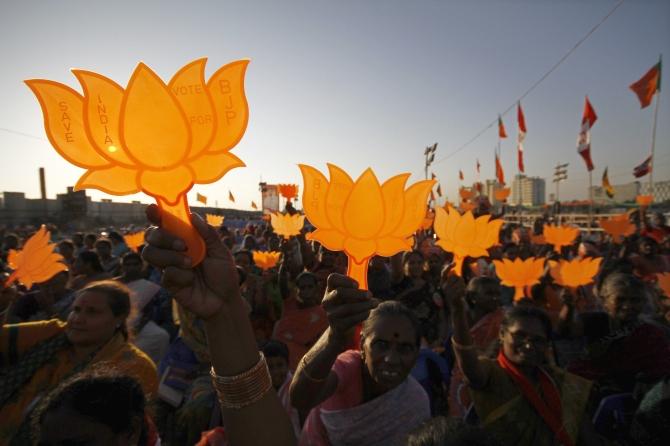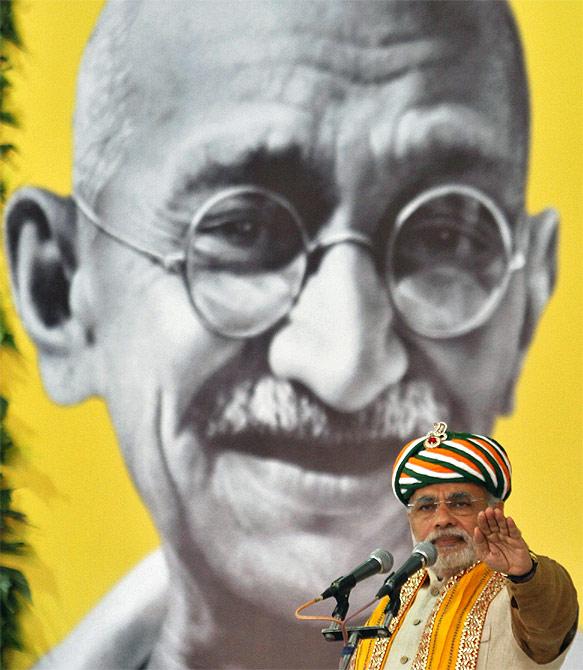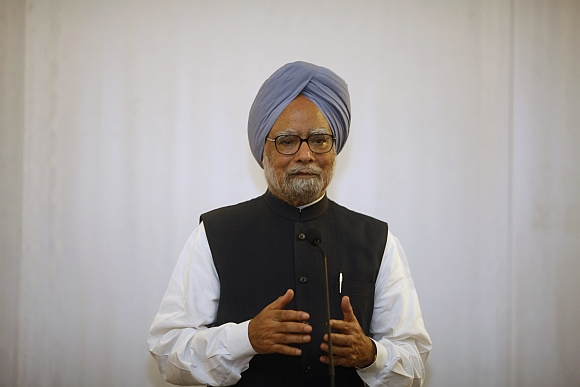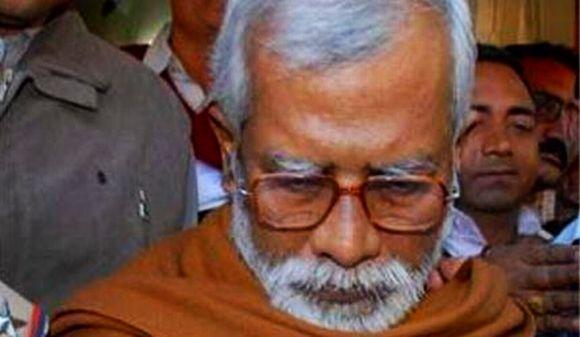
It won't be the Third Front, nor even a Federal Front. In case of a fractured verdict, a minority coalition comprising AIADMK, BJD and Trinamool Congress is the most likely outcome -- but it's the BJP that will call the shots, says Bharat Bhushan
If, because of a fractured verdict, the next government is to be a non-Congress, non-Bharatiya Janata Party government, then in all likelihood it will be led neither by the Left-sponsored Third Front nor by the one proposed by West Bengal Chief Minister Mamata Banerjee. It is the BJP that would determine the structure and shape of the front that could form the next government.
The Third Front has already collapsed as a pre-electoral alliance. The two leaders whose parties could have made it viable -- J Jayalalithaa of the All India Anna Dravida Munetra Kazhagam and Naveen Patnaik of the Biju Janata Dal -- have opted out.
Their refusal to ally with the Third Front is probably based on their assessment that the Congress is unlikely to reach the three-digit mark in the elections. Without the support of the Congress, a Third Front government would not be possible at the Centre.
Consequently, even the core constituents of the Third Front -- the Samajwadi Party, or SP, the Janata Dal-United and the Left parties -- have decided to contest alone. With no accommodation of potential allies, it is the end of the story for the Third Front for now.
...

Mamata’s Federal Front is also unlikely to go beyond the drawing board. Projected as a post-electoral front rather than a pre-electoral one, it is conceived virtually as a "chief ministers' front" -- in which chief ministers of the non-Congress, non-BJP states would come together to form the next government with the support of any large formation in the new Parliament.
The potential members of this chief ministers' front could be Mamata, Jayalalithaa, Patnaik, Nitish Kumar and perhaps even Omar Abdullah, Akhilesh Yadav and Parkash Singh Badal.
The crucial question is whether either the Congress or the Bharatiya Janata Party will be in a position to support such a front. If the Congress party does not cross the 100-seat mark, its support would be insufficient to form the government. That leaves only the BJP.
Various opinion polls suggest that the BJP, along with its ‘hard’ National Democratic Alliance partners, might be able to form the next government if the NDA gets between 180 and 231 seats. It might then be able to attract the "soft" NDA parties to its fold -- which either have been part of the NDA earlier or are not inimical to sharing power with the BJP.
The question of a non-Congress, non-BJP government would arise if the NDA gets less than 180 seats. If Narendra Modi cannot be prime minister, he would be reluctant to pass on the fruits of his campaigning to an ambitious interloper, and prefer to bide his time in the Opposition till the next general election.
...

He could press the party and its mother organisation, the Rashtriya Swayamsevak Sangh, to act against those within the party who would be blamed for its ‘suboptimal’ electoral performance. There is little doubt that there would be bloodletting in the BJP, with Modi making a bid for complete control of the party.
The RSS would have to take crucial political decisions in the absence of a clear victory. It would have to choose between two options: persuade Modi to make way for another leader from the BJP who might be acceptable to a larger number of allies; or lend support to a non-BJP coalition government that would not be inimical to its interests.
While there are a number of competent aspirants for the prime ministerial position in the BJP, some with better parliamentary and administrative experience than Modi's as well as a relatively inclusive outlook acceptable to allies, it is a call that the RSS would have to take. Its choice may be less than ideal, as when it foisted Nitin Gadkari on the party as president.
Moreover, such a government would suffer the same infirmities as the United Progressive Alliance government led by Prime Minister Manmohan Singh for two terms - each ally would extract its pound of flesh. In the name of coalition "dharma", the corruption of regional satraps would continue to flourish and the Hindutva agenda of the RSS might have to be buried once again for the sake of government formation.
...

Two factors might push the RSS to support an alliance of friendly parties under these circumstances. It would not want the Hindutva terrorist cases in which some of its "former" functionaries and activists of its front organisations are involved to be pursued with any vigour.
A determined probe could singe the top RSS leaders, as the recent interviews of terror accused Swami Aseemanand have suggested.
The more positive consideration for supporting a coalition government is that a friendly government would allow the RSS to conduct its activities without let or hindrance -- so that the organisation can continue to raise funds, expand and strengthen its infrastructure.
If the RSS pushes the BJP to support a minority coalition government, it would be put together and supported by the BJP without itself being part of it. Such a front does not need to be very big - 90-odd seats in Parliament would suffice. The three primary constituents of such a front could be the AIADMK, the Trinamool Congress and the BJD, and the rest will follow.
It would be inconceivable that such a front would have the SP or the JD-U within it. So it would not be the Federal Front, or the chief ministers' front, that is being proposed by Banerjee. Jayalalithaa may be the ideal candidate for leading such a government from the BJP's point of view, but it could even be led by Patnaik or Mamata.
Such a government would last till the time it brings itself down by its own contradictions or till the BJP decides to precipitate an election. The front, therefore, would be designed and constituted by the BJP if needed, and would also be dismantled by it when it is convenient to do so.
Click on MORE to see another PHOTO feature...